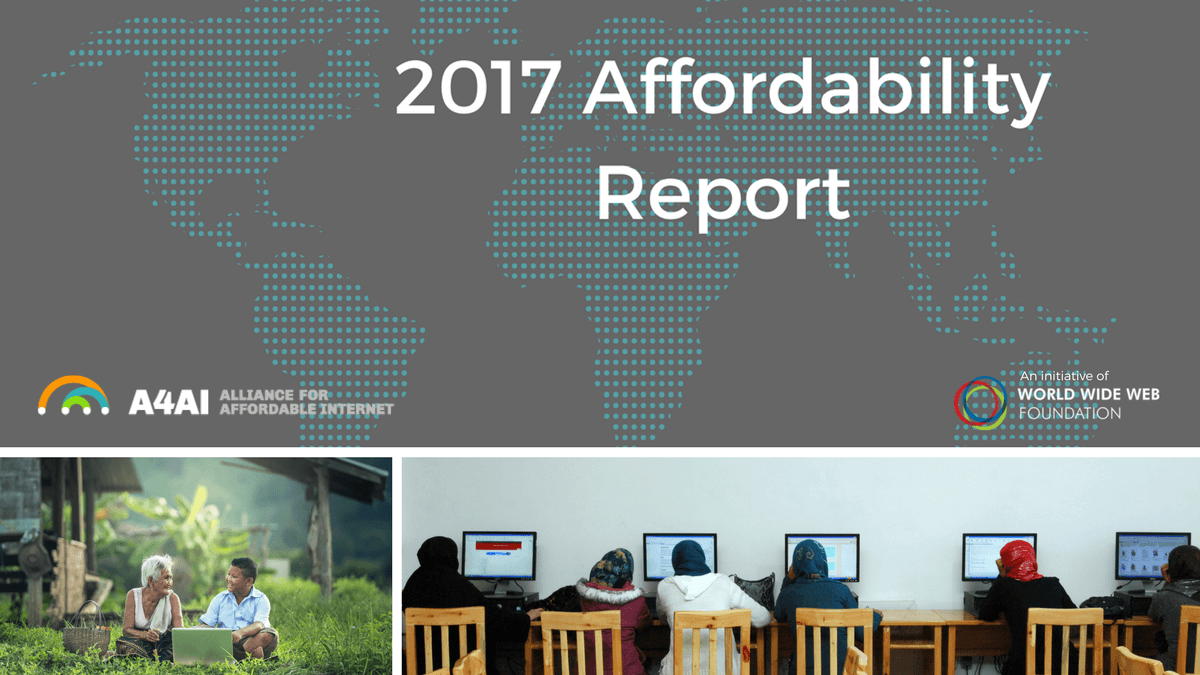The Affordability Report is an annual report produced by the Alliance for Affordable Internet (A4AI – a4ai.org), an 80+ member global coalition led by the Web Foundation. It represents an ongoing effort to understand why some countries have succeeded in making internet access more affordable, accessible, and universal, and what others can do to catch up quickly. This is a cross-post from the A4AI site, looking at the key takeaways of the 2017 report, released today.
Governments in most developing countries are failing to take the action needed to provide affordable internet access to their citizens. This is the key take-away from A4AI’s 2017 Affordability Report, released today.
Based on primary research across 58 low- and middle-income countries, the Affordability Report tracks policy and regulatory progress towards affordable internet. It represents an ongoing effort to understand why some countries have succeeded in making internet access more affordable, accessible, and universal, and what others can do to catch up quickly.
This year’s report finds that, despite having pledged to achieve affordable, universal internet access, governments are failing to back these promises with concrete action. Just 19 countries surveyed can claim to have affordable internet (i.e., 1GB of mobile broadband priced at 2% or less of average monthly income). Despite this, policies in the sector have barely changed since we started assessing policies for this report in 2014 — in the years since, the average increase in policy scores across all areas was only 10%.
This year’s report finds additional signs of this inaction:
- National broadband plans have never been developed or are badly outdated in 41% of countries.
- Universal Service and Access Funds — designed to extend connectivity to those who cannot afford access or who live in areas without needed infrastructure — either don’t exist or are dormant — in over a third of countries.
- Effective, funded schemes to offer free or subsidised access to the internet in public places exist in only half the countries surveyed.
The end result is while the digital revolution steams ahead, billions in developing countries — mostly women, the poor, rural dwellers, and other marginalised populations — are offline and being left behind. The slowing rate of growth in internet access, combined with government inaction, risks entrenching the digital divide and worsening inequality — already ranked as the top global risk by the World Economic Forum.
The good news? We can reverse this course —if policymakers choose to take action now. We know that smart policies that encourage more competition and innovation in key areas — from spectrum and infrastructure to last-mile connectivity — can help to pave the way toward affordability. These policies must be grounded in a more ambitious “1 for 2” affordability target that enables more income groups to afford to connect, and must be implemented in conjunction with public access solutions that ensure connectivity even for those that cannot afford to pay for data.
The Affordability Report is essential reading for anyone who cares about technology and development. You can read it here, and you can follow A4AI on Twitter or Facebook to stay up to date with latest news and join the global conversation on this issue.

Avis momeni
February 16, 2017
Have taking part for A4AIC survey 2016 for Cameroon.
Reply